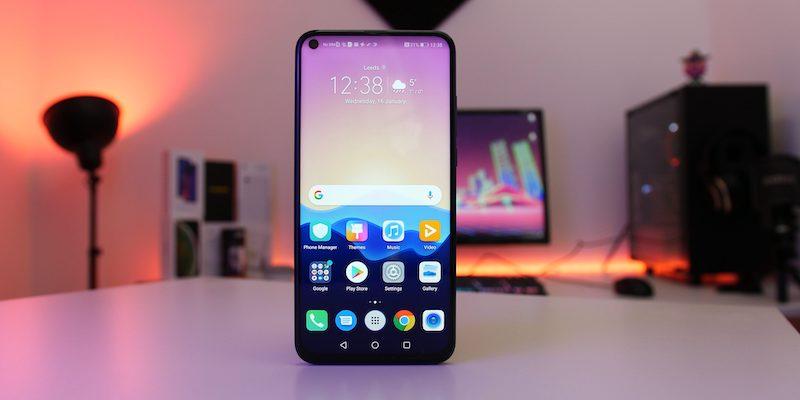
When will smartphone screens stop cracking?
During the Apple Special Event 2018, the Cupertino-based company introduced the new iPhone XS and XS Max models, which have traditionally been criticized for their lack of innovation and exorbitant prices. However, no one - neither the producer nor the viewers of this show - talked about how to deal with some unpleasant flaw that continues to haunt the users of these beautiful, advanced devices.
This is a technological problem, which turned out to be surprisingly difficult to solve. After spending hundreds (and now thousands) of dollars on a new smartphone, consumers probably rightly expect that the glass covering the display won't shatter when the device is dropped from their hands. Meanwhile, more than 2016 million smartphones in Europe are damaged by falls every year, according to a 95 IDC study. This is the most important cause of damage to portable devices. Secondly, contact with a liquid (mainly water). Broken and cracked displays make up about 50% of all smartphone repairs.
With designs becoming ever thinner and, in addition, there is a trend towards curved and rounded surfaces, manufacturers have to face a real challenge.
John Bain, vice president and general manager of Corning, maker of the popular display glass brand, recently said. Gorilla Glass.
The Gorilla 5 version offers glass with a thickness of 0,4-1,3mm. In the world of glass, Bain explains, some things can't be fooled and it's hard to expect durability from a 0,5mm thick layer.
In July 2018, Corning introduced the latest version of its display glass, Gorilla Glass 6, which is supposed to be twice as drop-resistant as the current 1 glass. During the presentation, company representatives said that the new glass withstood an average of fifteen drops on a rough surface from a height of XNUMX m in laboratory tests, compared to eleven for the previous version.
Bain said.
The current iPhone, Samsung Galaxy 9, and most premium smartphones use Gorilla Glass 5. The XNUMX will hit devices next year.
Camera manufacturers don't always wait for the best glass. Sometimes they try their own solutions. Samsung, for example, has developed a crack-resistant display for smartphones. It's made from a flexible OLED panel with a layer of reinforced plastic on top instead of brittle, breakable glass. In the case of a stronger impact, the display will only bend, and will not crack or break. Mortar strength has been tested by Underwriters Laboratories to "a rigorous set of military standards". The device has withstood 26 consecutive drops from a height of 1,2 m without physical damage and without affecting its operation, as well as temperature tests in the range from -32 to 71 ° C.
screenshot, fix it
Of course, there is no shortage of ideas for further innovations. A few years ago, there was talk of using the iPhone 6. sapphire crystal instead of gorilla glass. However, while sapphire is more scratch resistant, it is more susceptible to breakage when dropped than Gorilla Glass. Apple has finally settled on Corning products.
The little-known company Akhan Semiconductor wants, for example, to cover the front of the smartphone diamond. Not extracted and very expensive, but synthetic. diamond foil. According to endurance tests, Miraj Diamond is six times stronger and more scratch resistant than Gorilla Glass 5. The first Miraj Diamond smartphones are expected to arrive next year.
According to many experts, the day will come when smartphone displays will be able to heal cracks themselves. Scientists at the University of Tokyo have recently developed a glass that can be restored under pressure. On the other hand, researchers at the University of California at Riverside, as we wrote in MT, have invented a synthetic self-healing polymer that returns to its original state when its structure is torn or stretched beyond the elastic limit. However, these methods are still at the stage of laboratory research and are far from being commercialized.
There are also attempts to take the problem in angles from a different angle. One of them is the idea to equip the phone orientation mechanism behave like a cat when falling, i.e. turn immediately to the ground with a safe, i.e. without fragile glass, surface.
The smartphone is protected by the idea of Philip Frenzel
Philip Frenzel, a 25-year-old student at the University of Aalen in Germany, in turn decided to create a product that he called "Mobile Airbag" - that is, an active depreciation system. It took Frenzel four years to come up with the right solution. It consists in equipping the device with sensors that detect a fall - then the spring mechanisms located in each of the four corners of the case are triggered. Protrusions protrude from the device, which are shock absorbers. Taking the smartphone in hand, they can be put back into the case.
Of course, the invention of the German is, in a sense, an admission that we cannot develop a display material that is XNUMX% impact resistant. Perhaps the hypothetical spread of flexible "soft" displays will solve this problem. However, it is not entirely clear whether users will want to use something like this.